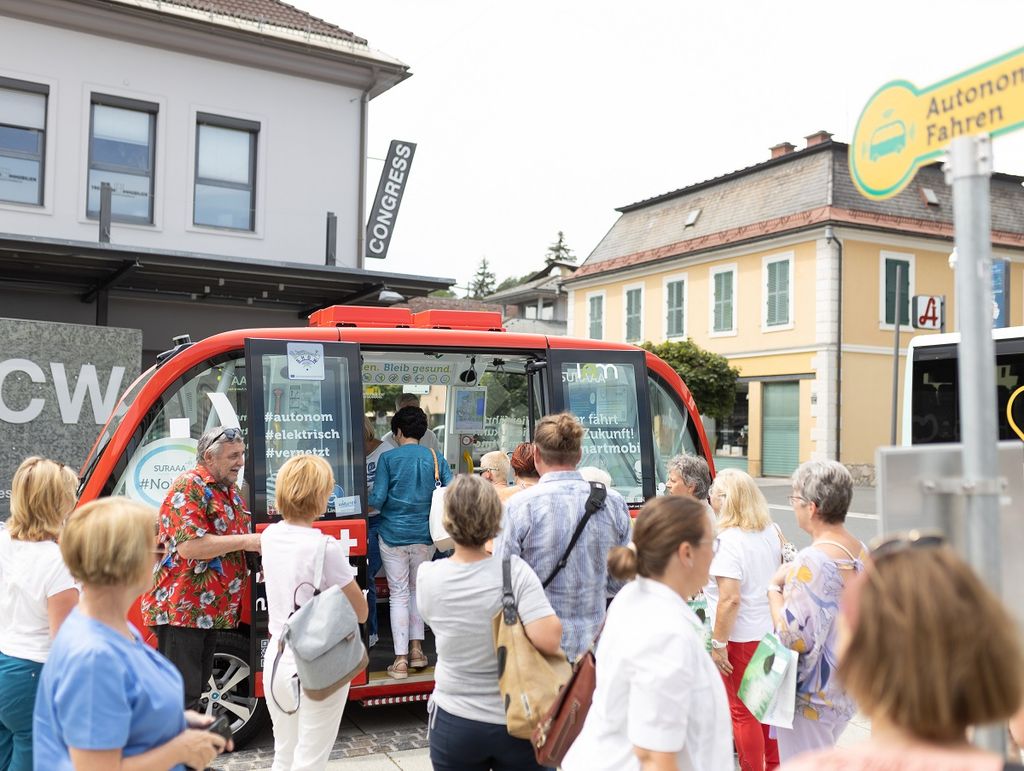
Automated mobility
Automated vehicle fleets that complement public transport
Automated and autonomous mobility are revolutionising public transport, and shared and on demand services. By deploying fleets of shared, connected, automated and electrified vehicles, the sector can build a sustainable mobility solution that complements existing public transport and stimulates multimodal travel.
Automated mobility integrates advanced technologies such as connectivity, automation, and AI into vehicle fleets to enhance their safety, efficiency, and sustainability. Automated vehicles (AVs) are equipped with sensors, communication systems and navigation technologies that allow them to communicate with each other and with the environment in real-time, optimising routes and reducing travel times.
Automated mobility is sometimes used interchangeably with ‘CCAM’ (Connected Cooperative Automated Mobility), a term mostly used by the European Commission.
The benefits of automated vehicles
In the long term, automated vehicles should reduce the cost of running public transport services as less drivers are needed. A welcome development, especially in a tight labour market. Reduced cost and less reliance on human drivers means that operators can increase accessibility in more remote areas and outside of peak travel hours.
By providing on-demand automated mobility for journeys from door to door, public transport becomes an even more attractive solution than the private car. Shuttles can be used as feeder service to mass transit in remote areas, adapting their routes based on demand. But also behind the scenes, where automated depot management at bus terminal would mean running a public transport network becomes less labour intensive.
Moreover, considering that 90% of road traffic accidents are due to human error, automated mobility promises safer journeys. Finally, AVs are good for the planet. When integrated into the public transport system, they could take every citizen to their destination with at least 80% fewer cars according to studies by MIT (New York), ITF (Lisbon) and the VDV (Stuttgart), drastically reducing carbon emissions.
Fully recognising the potential of AVs, UITP is involved in various research projects. In 2020, SHOW launched with 70 partners and UITP at the helm: an EU-project seeing real-life urban demonstrations taking place in 20 cities across Europe.
Another initiative researching automated mobility is ULTIMO, which is setting the foundations and deploying the very first economically viable large scale, on-demand and user-oriented AV public transportation services.
Check out the full overview of UITP’s activities in automated mobility below!
Automated Mobility Working Group
Next to the many projects UITP is involved in, the Automated Mobility Working Group forms an informal structure to discuss the topic. The Working Group already gathered over 50 members from across the transport sector. Together they work on knowledge and roadmaps around the technology of AVs and how to integrate them effectively into the public transport network.
Are you a member of UITP and interested in joining the Working Group? Please contact Daria Kuzmina or Dominic Lauwers.
The latest on CCAM

The implementation of automated mobility poses challenges. The need for a high level of cooperation and coordination between different public transport operators for example. This can be difficult to achieve, and requires strong public transport authorities to coordinate.
Another challenge is the need for investment in technology and infrastructure to support these initiatives. Many regions won’t have access yet to the significant recourses needed to implement safe and reliable automated fleets.
Despite these challenges, the potential impact of automated mobility on the future of public transport is significant. By promoting cooperation and collaboration between different operators, the technology has the potential to create more integrated and comprehensive transport networks that are better able to meet the needs of the community.
This, in turn, can lead to increased ridership, improved accessibility, and reduced environmental impact, making public transport a more attractive option for the public. Automated mobility has the potential to play a major role in shaping the future of public transport and ensuring its continued success and growth.
Contact
Committee Chair

Endre ANGELVIK
Vice President Mobility Services, RUTER ASUITP

UITP

Membership benefits
2025 Training Calendar



